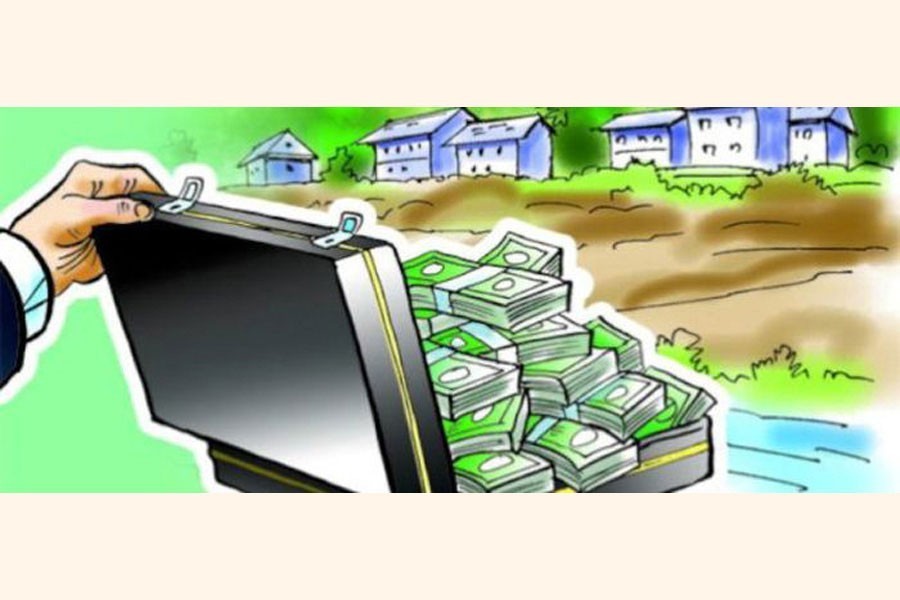Govt in comfortable spending position after economy averts crashing during pandemic

Published :
Updated :

With the world economy stricken by the economic crisis brought on by the Covid-19 pandemic, the Bangladeshi economic engine has shown itself to be rather resilient in facing down the crisis and keeping the wheels of the economy turning.
While formulating the budget for fiscal 2020-21 (FY21) the government was in a quandary regarding the sources of financing for implementing the budget because of the potential stagnation or even recession the economy could have faced during the COVID-19 pandemic.
But in reality, the government was able to avoid any notably tough challenges during the first quarter of the FY21 (July to September) while the second quarter became gradually more comfortable.
The overall situation of the government in terms of money supply and source of money is comfortable for the government.
According to the statistics from National Board of Revenue (NBR) and Bangladesh Bank, the government did not fall into a fund crisis in the first quarter (July-September) of FY21 as the revenue growth was 4.11 per cent.
Besides, the expense for interest payment was significantly lower due to the idle liquidity in the money market.
In the current account balance of the government, the trend for running surpluses returned.
On the other hand, the reserve for the foreign currency already passed $44 billion landmark.
Finance Minister AHM Mustafa Kamal recently in a programme said that the government had fixed the target to touch the $42 billion by end of this year, but the target was achieved much earlier.
"We have another target to make the foreign reserve $50 billion by 2030 and we hope that we will be able to do that," he told the programme.
According to the NBR, the revenue collection for July-September period was Tk 499.89 billion, which is 4.11 per cent higher than the same period of the previous fiscal.
The revenue collection in the July-September period of fiscal 2019-20 (FY20) was Tk 480.17 billion. To meet the budget deficit in the FY20's first quarter, the government had to borrow Tk 271.15 billion from the banking sector while the amount of total borrowing, from the banking sector, savings certificates and foreign loans was Tk 377.51 billion.
In the first quarter of the current fiscal, the government borrowed Tk 88.50 billion from banking sector while the amount of total borrowing, from the banking sector, savings certificates and foreign loans was Tk 317.29 billion.
In the first quarter of the FY20, the selling of savings certificates was Tk 46.98 billion while the amount in the same period of FY21 was Tk 116.62 billion. The target of the government to borrow from savings certificate is Tk 200 billion in the running fiscal.
On the other hand, the government is getting benefit of excessive idle liquidity of Tk 1.7 trillion in the banking sector, which resulted in lower interest rates for government borrowing from this sector.
In September 2019, the balance of the government in the current account was Tk 0.71 billion in deficits, but a year later it was Tk 3.53 billion in surplus.
In the balance of payment, it was deficit of Tk 200 million in September 2019 while it is Tk 3.09 billion surplus in the same period of 2020.
In the first quarter of FY20, the government got loans of Tk 500 billion from foreign sources, while it is Tk 89.49 billion in the current fiscal.
The size of the budget in the running fiscal has been fixed at Tk 5.68 trillion where the estimation for the revenue collection is Tk 3.78 trillion. Of the amount Tk 3.30 trillion will come from NBR, Tk 150 billion will come from non-NBR source and Tk 330 billion will be collected from non-tax revenue sources.
The total budget deficit of the running fiscal has been fixed at Tk 1.90 trillion. To fill this deficit Tk 800.17 billion will come from foreign sources while Tk 1.10 trillion will come from internal sources. Of the internal sources Tk 849.83 billion will come from banking sector and Tk 250 billion will come from savings certificates and non-banking sector.


 For all latest news, follow The Financial Express Google News channel.
For all latest news, follow The Financial Express Google News channel.